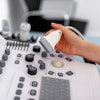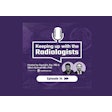Each year anxiety runs high for fellows and residents completing their training as to whether attractive jobs will be available for them. Radiologists interested in changing jobs share their concerns. The worry is merited, as the job market for diagnostic radiologists has fluctuated dramatically in the past decade, going from one job per every four radiologists in the mid-1990s to four jobs per radiologist in the early 2000s before dipping again in 2004, according to data from the American College of Radiology (ACR) Professional Bureau, or placement service.
Researcher Jonathan Sunshine, Ph.D., of the ACR and the department of diagnostic radiology at Yale University in New Haven, CT, has conducted an annual survey of vacancies in academic departments and published the results for more than 10 years. Sunshine published an update in this month's Journal of the American College of Radiology, along with colleague Dr. C. Douglas Maynard of the department of radiology at Wake Forest University School of Medicine in Winston-Salem, NC. The report describes the employment market for diagnostic radiologists from 2006 to 2007 (JACR, October 2007, Vol. 4:10, pp. 686-690).
In addition to their survey, Sunshine and Maynard also obtained data from the placement service of the ACR during the annual meeting of the Radiological Association of North America (RSNA), then correlated the two datasets. As the RSNA meeting occurs at the end of the year, the data are applied to the following calendar year, according to the report.
For the macro picture, Sunshine and Maynard found that the overall employment situation has remained steady at about one job listing per applicant since 2003, and that the current situation is between the 1994 low of one job for every four applicants and the 2001 high of four jobs per applicant. For 2006, there was a slight upturn, from 1.1 in preceding years to 1.2. In 2007, there was a substantial downturn, to 0.72. This trend toward job surplus in 2007 -- meaning it will be slightly more difficult for job seekers to find an attractive position than it has been -- need not be considered permanent, according to Sunshine and Maynard, as the employment situation changes from year to year.
The percentage of academic vacancies in each subspecialty was compared with the percentage of all academic radiologists in that subspecialty; a high ratio shows that radiologists in the subspecialty are experiencing more of a shortage than academic radiologists on average, while a small ratio describes a surplus situation. The subspecialties with the highest numbers of vacancies in 2006 included breast imaging (14%), vascular/interventional (14%), neuroradiology (12%), pediatric (11%), abdominal imaging (9%), research (8%), and musculoskeletal (8%).
Sunshine and Maynard wrote that the high ratio of academic vacancies to academic radiologists for interventional radiology and breast imaging is not a sudden trend, but a phenomenon that has been occurring for at least three years. The researchers also stated that they don't know if these differences among academic subspecialties can also be found in community practices.
Finally, the researchers acknowledged the limitations of their study, including that the data from the ACR's Professional Bureau represents a smaller and smaller percentage of the overall employment market, due to job seekers' use of electronic media and recruiting firms.
By Kate Madden Yee
AuntMinnie.com staff writer
October 23, 2007
Related Reading
Inflation swamps specialty salaries, but radiologists stay afloat, August 31, 2007
Radiologists still high on recruiters' wish lists, August 14, 2007
Radiology ranks second in salary survey, August 1, 2007
RT wages growing more slowly, ASRT finds, July 26, 2007
Mammography pays well despite reputation, SalaryScan survey says, May 10, 2007
Copyright © 2007 AuntMinnie.com




















